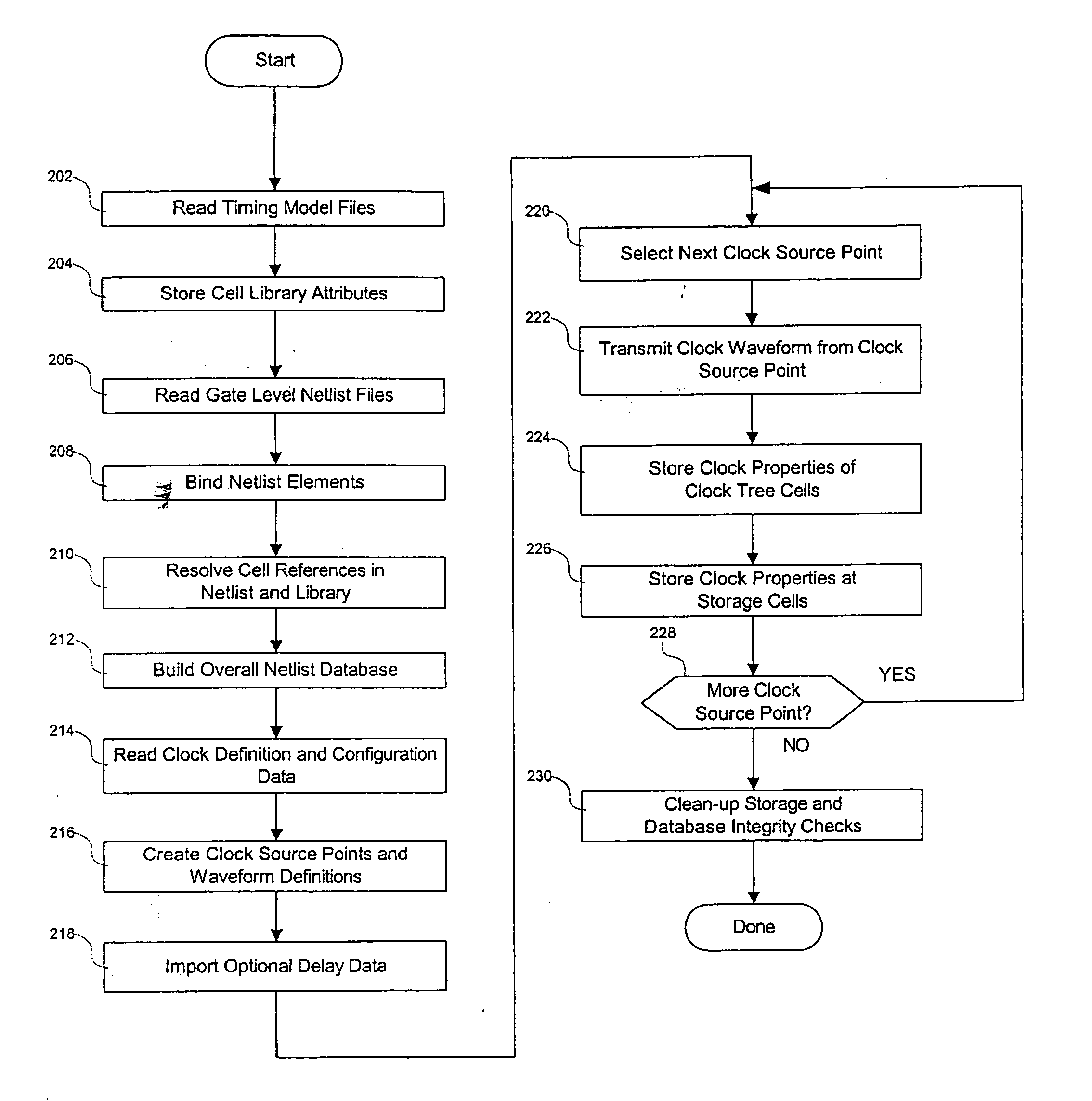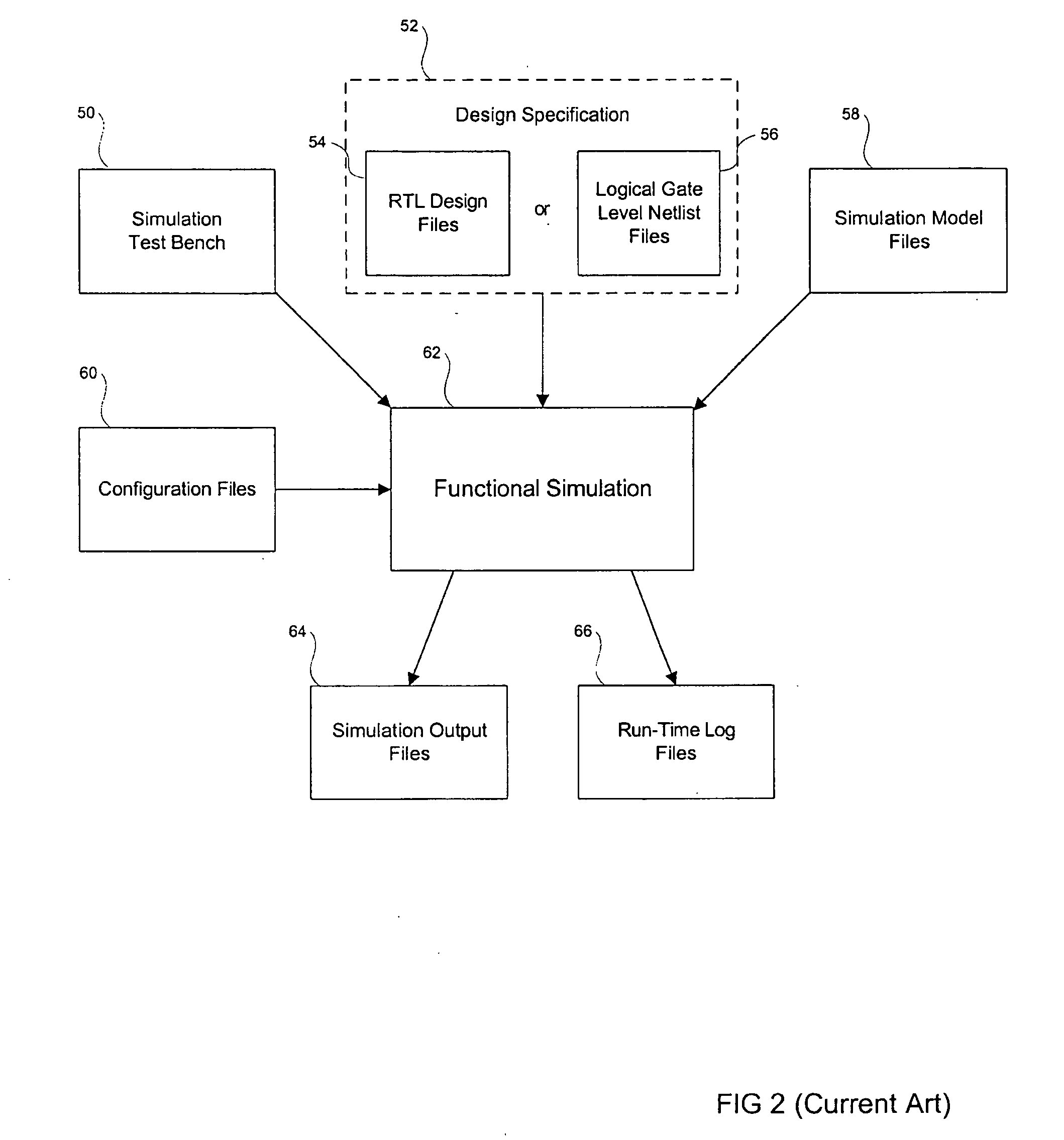Method for analyzing and validating clock integration properties in circuit systems
a technology of clock integration and circuit system, applied in the direction of cad circuit design, program control, instruments, etc., can solve the problems of increasing the number of distinct clock domains, increasing the complexity of the number of clock domains, and presenting many challenges to the development team of soc designs, so as to improve capacity and consume less memory and runtime
- Summary
- Abstract
- Description
- Claims
- Application Information
AI Technical Summary
Benefits of technology
Problems solved by technology
Method used
Image
Examples
Embodiment Construction
[0044] Various aspects will now be described in connection with exemplary embodiments including certain aspects described in terms of sequences of actions that can be performed by elements of a computer system. For example, it will be recognized that in each of the embodiments, the various actions can be performed by specialized circuits or circuitry (e.g., discrete and / or integrated logic gates interconnected to perform a specialized function), by program instructions being executed by one or more processors, or by a combination of both. Thus, the various aspects can be embodied in many different forms, and all such forms are contemplated to be within the scope of what is described. The instructions of a computer program for providing a design profile validation as illustrated in FIG. 6 can be embodied in any computer readable medium for use by or in connection with an instruction execution system, apparatus, or device, such as a computer based system, processor containing system, ...
PUM
 Login to View More
Login to View More Abstract
Description
Claims
Application Information
 Login to View More
Login to View More - R&D
- Intellectual Property
- Life Sciences
- Materials
- Tech Scout
- Unparalleled Data Quality
- Higher Quality Content
- 60% Fewer Hallucinations
Browse by: Latest US Patents, China's latest patents, Technical Efficacy Thesaurus, Application Domain, Technology Topic, Popular Technical Reports.
© 2025 PatSnap. All rights reserved.Legal|Privacy policy|Modern Slavery Act Transparency Statement|Sitemap|About US| Contact US: help@patsnap.com



